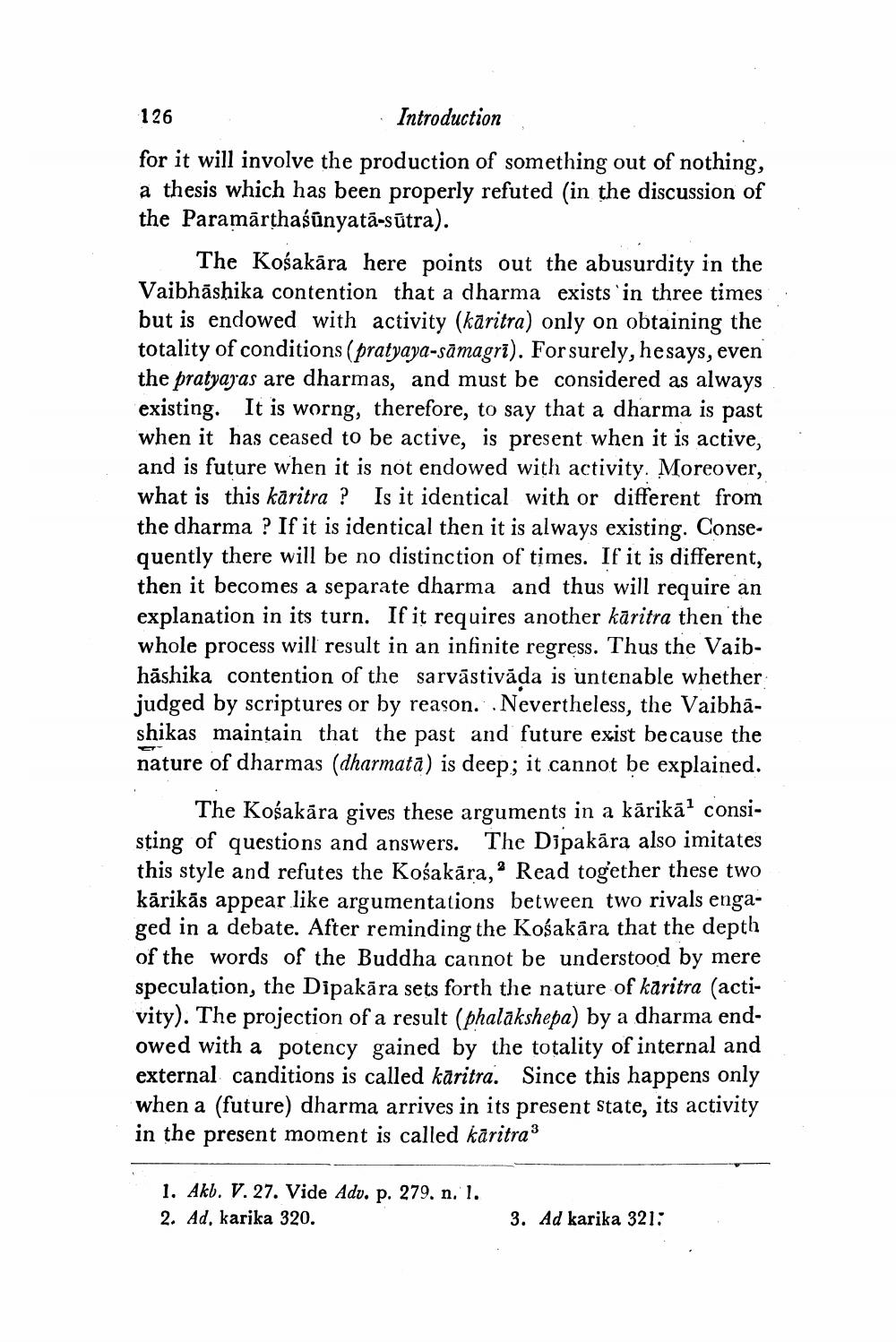________________ 126 Introduction for it will involve the production of something out of nothing, a thesis which has been properly refuted (in the discussion of the Paramarthasunyata-sutra). The Kosakara here points out the abusurdity in the Vaibhashika contention that a dharma exists in three times but is endowed with activity (karitra) only on obtaining the totality of conditions (pratyaya-samagri). For surely, hesays, even the pratyayas are dharmas, and must be considered as always existing. It is worng, therefore, to say that a dharma is past when it has ceased to be active, is present when it is active, and is future when it is not endowed with activity. Moreover, what is this karitra ? Is it identical with or different from the dharma ? If it is identical then it is always existing. Consequently there will be no distinction of times. If it is different, then it becomes a separate dharma and thus will require an explanation in its turn. If it requires another karitra then the whole process will result in an infinite regress. Thus the Vaibhashika contention of the sarvastivada is untenable whether judged by scriptures or by reason. Nevertheless, the Vaibhashikas maintain that the past and future exist because the nature of dharmas (dharmata) is deep; it cannot be explained. The Kosakara gives these arguments in a karikae consisting of questions and answers. The Dipakara also imitates this style and refutes the Kosakara,? Read together these two karikas appear like argumentations between two rivals engaged in a debate. After reminding the Kosakara that the depth of the words of the Buddha cannot be understood by mere speculation, the Dipakara sets forth the nature of karitra (activity). The projection of a result (phalakshepa) by a dharma endowed with a potency gained by the totality of internal and external canditions is called karitra. Since this happens only when a (future) dharma arrives in its present state, its activity in the present moment is called karitra3 1. Akb. V. 27. Vide Adv. p. 279. n. 1. 2. Ad, karika 320. 3. Ad karika 321:




